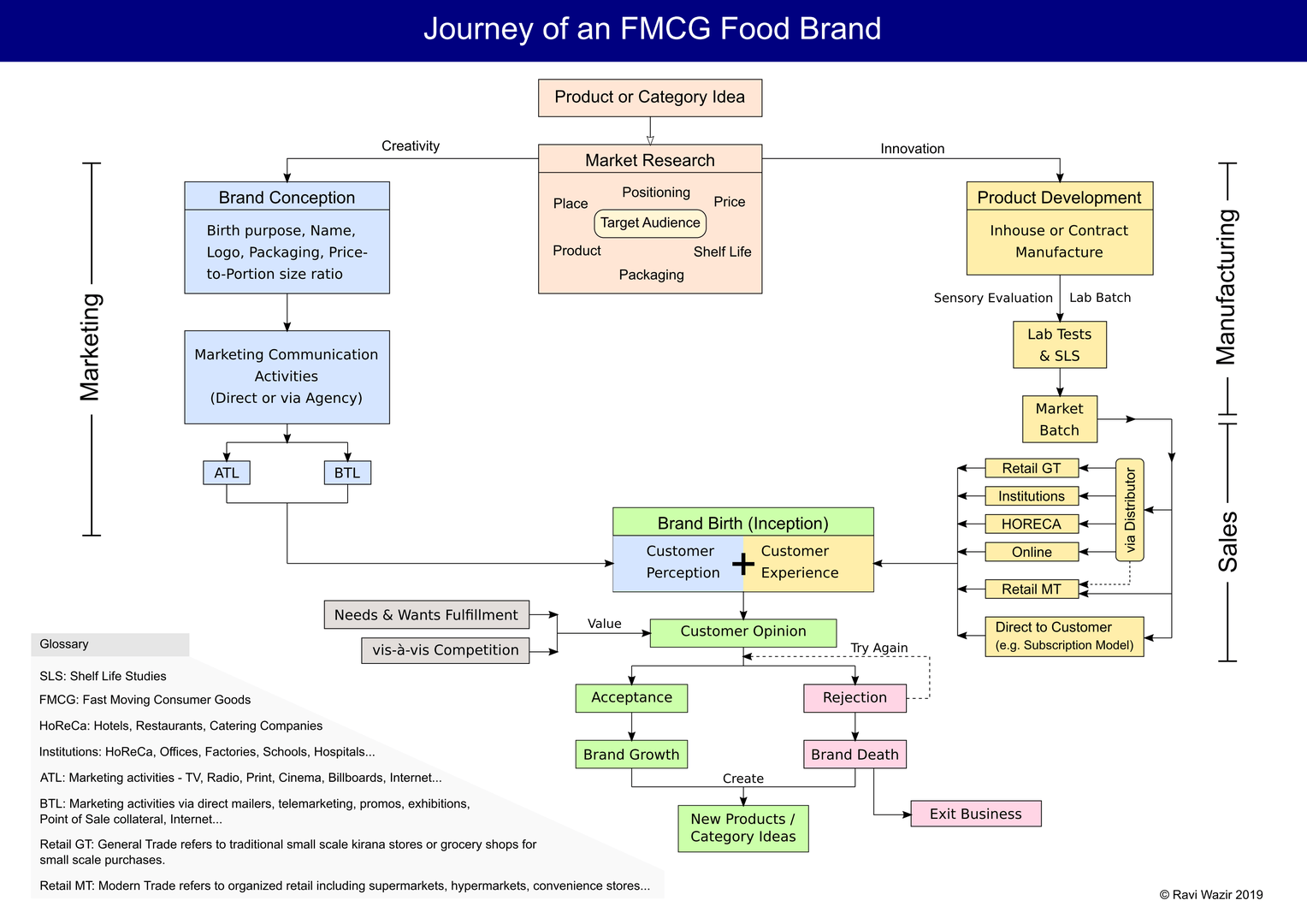How to successfully take an FMCG brand to market
As with any business through its quest, an FMCG food brand must make a series of good decisions to increase its likelihood of success in the marketplace.
During my work with consumer foods, from premium milk to imported beers, from luxury chocolates to powdered pre-mixes for vending machines, here’s what I found worked favourably, often enough.
The business usually starts with an idea of a certain product or category likely to meet a need in the market. Researching its target audiences well and understanding their buying behaviour helps figure out whether or not the idea is worth actualizing.
Market research should ideally cover:
- Which product will serve the interest of potential consumers
- At what price & portion-size it will do so
- What the positioning will be
- What packaging & shelf-life would be suitable and
- Which place(s) would make it easily available for repeated purchase by consumers
From the Market Research stage, two simultaneous paths must be pursued: One which involves manufacturing and sales, so as to bring the actual product to the consumer as a tangible experience; the other which involves marketing so as to bring the intangible aspect of the brand to the consumer and influence her perception.
Consumer Experience
Whether you’ve developed the first version of your recipe in a garage or a professional lab, you must decide whether to outsource the manufacture with your proprietary recipe, or to build your own production facility so as to “control” your quality.
Outsourcing the manufacture helps save capital on the factory and allows you to focus your time and money on brand-building. Most large FMCG food businesses typically outsource their manufacture.
If however, you’re production inclined, and opt to build your own facility, remember that you’ll then need to ensure that your factory’s capacity is utilized well enough to cover its own costs, or you’ll be chasing other brands to do job-work rather than building your own brand... unless of course that is your agenda.
After the sensory approval (taste, colour, aroma, texture/consistency), a lab-sized batch must be prepared for analysis of its acidity, rancidity, bacterial count, solid-liquid ratio and other parameters as outlined by the food safety authorities.
However astute your palette or that of your chef’s, remember that eventually it’s what your customer thinks about your product that really matters. One of the best ways to de-risk the product aspect of your business from failure is to include your target audiences in your sensory evaluation.
For a product with a shelf-life of say 12 months, an accelerated shelf-life study (SLS) is done over 12 weeks, following which a market batch must be readied.
A strong Go-to-Market plan considers which distribution channels and points of sale would best facilitate your consumer experience. You may distribute your product via: General Trade (GT) and Modern Trade (MT) retailers, your own branded counters or kiosks, through Institutions, HORECA (Hotels, Restaurants, Catering Companies), Online, and even via a direct-to-consumer channel like a subscription model for instance.
Consumer Perception
Perception, as the saying goes, is almost always greater than reality. So it’s fair that many consider the marketing and branding aspect of a business to be even more important than the actual product experience. The brand’s birth purpose, name, logo etc. are carefully packaged into a narrative that is conveyed dynamically and repeatedly to its consumers through various engaging stories and marketing activities. Nestlé for instance, crafted many interesting localised communications based on very relatable occasions at which Maggi noodles could be consumed in India. This is what led to Maggi becoming a household name, seen as “our own” and is now “the food that many of our generation have grown up on”.
It is when the two paths of consumer experience and consumer perception meet, that the brand is actually born in the hearts and minds of your consumers.
Consumer Experience + Consumer Perception = Brand Birth.
It is at this stage that your consumer forms an opinion of value that the brand offers, based on the extent to which it fulfils her needs, and how it compares to options available in the market. It puts her in a position to accept or reject your product, either entirely or partially.
Consumer acceptance backed by easy availability of our product usually leads to its repeated purchase, and thus the possible growth of the brand. When a consumer pays money for what she has experienced or perceived to be good value, she becomes a customer.
If consumers reject your brand or do not purchase it, you need to understand why, and try and do whatever it takes to make it work for them, or else the brand may die. In such a situation, the company will either close down completely or then just close that vertical, and identify a new product or category that could resonate in the market.
